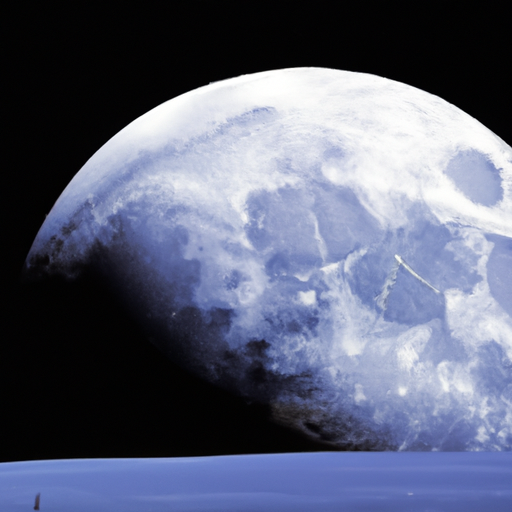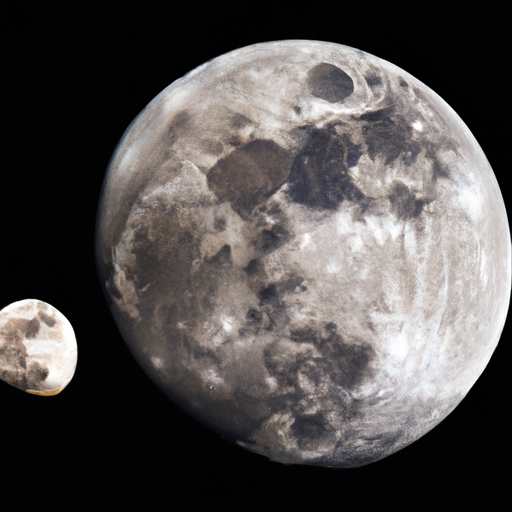The historic achievement of India’s Chandrayaan-3 mission has made its mark in humanity’s exploration of the Moon. By successfully landing a spacecraft near the lunar South Pole, India joins the ranks of the United States, Russia, and China as only the fourth nation to achieve a soft landing on the Moon. The lunar South Pole is a fascinating and challenging region, with potential water ice residing in the dark craters. Chandrayaan-3’s goal is to study the lunar environment and resources in this unique area, examining factors such as temperature profiles and chemical composition of the soil. The mission’s success not only opens up possibilities for future lunar missions, including sample return missions and collaborations with other space agencies, but it also highlights the Moon’s potential as a habitat for humans and a gateway for deep space exploration.
Chandrayaan-3, India’s third lunar mission, embarked on its journey on July 15, 2023. The South Pole landing site was a strategic choice, as it offers the potential for future moon bases. The mission faces various challenges, including communication delays, lack of detailed maps, and limited sunlight at the South Pole region. Despite these hurdles, Chandrayaan-3 triumphantly landed near the South Pole on August 20, 2023. Equipped with 14 payloads, the mission aims to gather crucial data on the lunar surface, temperature, chemical composition, and more. The success of Chandrayaan-3 not only showcases India’s progress as a leading space-faring nation but also sheds light on the secrets and surprises that the Moon’s South Pole holds. With continued exploration and utilization, the Moon offers promising opportunities for humanity’s future in space.
India’s Chandrayaan-3 mission successfully landed near Moon’s south pole
India recently achieved a historic feat in humanity’s exploration of the Moon with the successful landing of Chandrayaan-3 near the lunar south pole. This accomplishment makes India the fourth country, after the USA, Russia, and China, to achieve a soft landing on the Moon. However, what makes this achievement especially significant is that India is the first country to land near the lunar south pole. This region is unique and challenging, and it could potentially serve as a future location for moon bases. The successful landing of Chandrayaan-3 marks an important milestone in India’s growing space program.
The Significance of the Lunar South Pole
The lunar south pole is a region of great scientific interest and potential for future exploration. One of the main reasons why this region is so significant is the possibility of finding water ice trapped in the permanently shadowed craters. Water ice is a valuable resource that could be used for drinking water, oxygen, and rocket fuel, making it crucial for sustaining future lunar missions. The temperature at the lunar south pole can range from -10 degrees to 60 degrees Celsius, depending on the depth. Exploring this region and understanding its unique characteristics is essential for future human missions and the utilization of lunar resources.

Chandrayaan-3’s Objectives
The primary objective of Chandrayaan-3 is to study the lunar environment and resources around the south pole. The mission aims to collect data and analyze the temperature profile and chemical composition of the lunar soil. By studying the lunar surface and subsurface, scientists can gain valuable insights into the geological processes and composition of the Moon. This information is crucial for understanding the formation and evolution of the Moon and can provide important clues about the history of our solar system.
India’s Growing Space Program
India’s space program has come a long way since its inception in 1962. With the launch of its first rocket from Thumba, a fishing village, India embarked on a journey to become one of the leading space-faring nations in the world. Over the years, India has launched numerous satellites, rockets, and probes into space, contributing significantly to scientific research and technological advancements. The success of Chandrayaan-3 is a testament to India’s commitment to space exploration and its growing prowess in the field.

Past Lunar Missions: Chandrayaan-1 and Chandrayaan-2
Chandrayaan-1 and Chandrayaan-2 were India’s previous lunar missions, each with its unique objectives and achievements. Chandrayaan-1, launched in 2008, orbited the Moon for nearly a year, providing valuable data and images of the lunar surface. It also carried the Moon Impact Probe, which detected traces of water molecules in the lunar atmosphere. Chandrayaan-2, launched in 2019, comprised an orbiter, a lander named Vikram, and a rover named Pragyan. Although the lander lost contact with Earth during the final descent and crashed on the lunar surface, the orbiter continues to orbit the Moon, capturing high-resolution images of its surface.
The Payloads on Chandrayaan-3
Chandrayaan-3 carries an impressive array of 14 payloads on board the lander and the rover. These payloads include devices designed to measure temperature, analyze the chemical composition of the lunar soil, and test Einstein’s theory of general relativity. One of the most critical payloads is ChASTE (Chandra’s Surface Thermophysical Experiment), which measures the temperature profile of the lunar soil at different depths. This information can help determine the depth at which water ice may be present and the quantity available for future exploration and utilization.

Mission Duration and Data Collection
Chandrayaan-3 is expected to operate on the Moon for at least one lunar day, equivalent to 14 Earth days. During this time, the lander and the rover will perform various experiments and tasks, such as drilling into the soil, analyzing samples, testing technologies, and exploring new sites. The lander and rover will communicate with each other and with Earth through the Chandrayaan-2 orbiter, which acts as a relay for data and commands. The orbiter will also continue to capture images of the lunar surface, providing valuable data about the unexplored South Pole region.
The Future of Lunar Missions
The success of Chandrayaan-3 paves the way for future lunar missions, both from India and other countries. India has plans to launch Chandrayaan-4 in 2025, which will be a sample return mission. This mission aims to bring back lunar material from the South Pole region for further analysis on Earth. Additionally, India intends to collaborate with other space agencies, such as NASA and ESA, on joint missions to explore different aspects of the Moon. These future missions hold the potential for significant scientific discoveries and advancements in our understanding of the Moon and its resources.
The Moon as a Scientific Destination
The Moon has long been a scientific destination with numerous unanswered questions and mysteries waiting to be unraveled. Through missions like Chandrayaan-3, scientists can gather data and conduct experiments to learn more about the Moon’s geology, composition, and environment. This knowledge not only contributes to our understanding of the Moon but also has implications for our understanding of the Earth and the solar system as a whole. Furthermore, the Moon’s proximity to Earth makes it an ideal testing ground for technologies and systems necessary for future deep space exploration, including missions to Mars and beyond.
Conclusion
India’s successful landing of Chandrayaan-3 near the lunar south pole marks a significant achievement in the country’s space program. The lunar south pole is a unique and challenging region with the potential for valuable scientific discoveries and future human settlements. Chandrayaan-3’s objectives to study the lunar environment and resources contribute to our understanding of the Moon’s geological processes and composition. This mission opens up new possibilities for future lunar missions, sample return missions, and collaborations with international space agencies. The Moon continues to captivate our imagination, and with each mission, we come one step closer to unraveling its secrets.